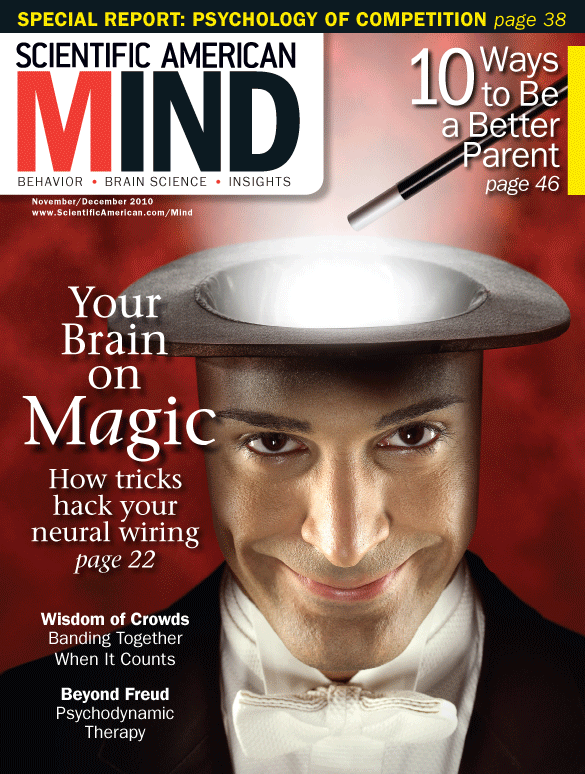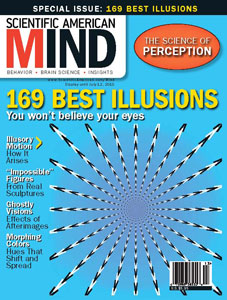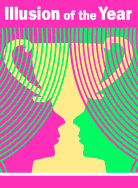
http://www.annabellebreakey.com/quick-look/
You don’t get to be my size without eating a few large meals now and again. I’ve wondered if some of my darkest acts of eating might be considered binging. Apparently not, as the definition involves eating large amounts of food within a two-hour period at least twice per week: I’m more of a once-a-month overmuncher. But even then I feel fortunate that I have been compelled to eat the amounts that some guys do. Last Tuesday’s NY Times gave the example of a man who would eat 10,000-15,000 calories in a single 1.5-hour sitting, as reported on a study from the International Journal of Eating Disorders.
Binge eating combines cognitive dysfunction (we decide what to eat, we seek it out, acquire it, prepare it, and then eat it) with motivational dysfunction (the hunger itself is not a decision we make, and neither is the feeling of satiety that clearly fails to kick in during a binge). New research shows that binge eating is not more prevalent among females (as traditionally believed) but comparable across the sexes.
–Stephen Macknik

http://www.freechristmaswallpapers.net/wallpaper/New-Years-Eve-Fireworks/
Composer and synesthete Harley Gittleman visited our institute today to discuss his perception. Synesthesia is when you experience more than one sensory perception in response to stimulation of a single sensory modality. Often, people see numbers as having colors (even when they are uncolored physically, they see specific replicable colors matched to numbers. Estimates are as much as 5% of the population have some degree of synesthesia.
Harley perceives specific colors and shapes when he hears certain tones. That’s especially interesting in his case because he is a professional composer and musician. Harley played some of his wonderful music for us = and pointed to colors as he experienced synesthesia in relationship to the tones, in real time. His daily life is awash in color, motion and shape. He listens only to talk shows when he drives and he’s been known to walk into a wall or two when he absent-mindedly attends to the floating colors and shapes in front of him instead of to the real world.
Current theories suggest that synesthesia is due to wiring between neighboring brain areas that usually are not connected together. This idea is bolstered by brain imaging studies showing increased connectivity and mutual functional activation between neighboring brain areas in synesthetes as compared to non-synesthetes.
Synesthesia might be due to mutations in genes controlling neural plasticity and pruning of neurons. In that case, it may have an adaptive value from an evolutionary standpoint, as it brings new insight and relationships between neural experiences in a way that is interesting and fairly harmless.
Do you experience synesthesia? If so, is it useful to your everyday life?
–Stephen Macknik
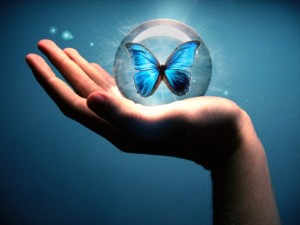
“Everything she did and love, everything she was, required language.”
― Lisa Genova, Still Alice
Harvard-trained neuroscientist and author Lisa Genova couldn’t get agents or publishers interested in her debut novel Still Alice. So she decided to self-publish. The book became an overnight sensation that led to a six-figure advance from publishing house Simon and Shuster.
Still Alice describes the descent of Alice, a successful professor and researcher, into early-onset Alzheimer’s disease, and the consequences for her family and career.
Genova followed up her Still Alice success with another novel grounded in clinical neuroscience: Left Neglected (about a patient suffering from hemineglect).
Both Still Alice and Left Neglected are moving and well-written stories, but if I had to choose I’d go for the more restrained tone of Still Alice. As a fellow academic, I also found the protagonist very relatable. (Full disclosure: in one of the most poignant moments in the book, Alice forgets a critical piece of electronics inside the fridge, with vital consequences… well, I’ve done the same exact thing at least once, although with far less momentous results).
For extra credit, read “Elegy for Iris”, literary critic John Bayley’s memoir about his wife, novelist Iris Murdoch, and her battle with Alzheimer’s disease. Or watch the Oscar-winning movie “Iris”.
Also, check out the Society for Neuroscience’s primer about Alzheimer’s disease.
-Susana Martinez-Conde
 We just got our cruise documents for the Scientific American Bright Horizons 15 cruise departing on October 25th! The itinerary includes a private tour of CERN’s Large Hadron Collider, the Vatican’s Observatory, Athens, Ephesus, Haifa, and Jerusalem. Steve and I are two out of six featured speakers, and we are both looking forward to the experience.
We just got our cruise documents for the Scientific American Bright Horizons 15 cruise departing on October 25th! The itinerary includes a private tour of CERN’s Large Hadron Collider, the Vatican’s Observatory, Athens, Ephesus, Haifa, and Jerusalem. Steve and I are two out of six featured speakers, and we are both looking forward to the experience.
Except.
I made the mistake of reading the latest Table of Contents from the Proceedings of the National Academy of Sciences, and this title caught my attention: “Gender, social norms, and survival in maritime disasters“. Some Sleights of Mind‘s readers may remember that my grandfather Enrique survived the sinking of the SS Castillo de Olite, which claimed 1,476 lives (the greatest loss of life from the sinking of a single ship in Spanish history). Naturally, I had to know more about this study.
Swedish economists Mikael Elinder and Oscar Erixson analyzed 18 maritime disasters spanning three centuries, covering the fate of over 15,000 individuals of more than 30 nationalities. Their data shows that, Jack Dawson’s heroics notwithstanding, women have a clear survival disadvantage compared with men, and passengers are more likely to die than captains and crew. The authors conclude: “Taken together, our findings show that human behavior in life-and-death situations is best captured by the expression “every man for himself.””
I just hope they have enough lifeboats.
–Susana Martinez-Conde
Wednesday is Illusion Day. Every Wednesday, we feature a contemporary illusion, or a variation on a classic illusion.
We’re visiting Legoland in Carlsbad, California, so it seems fitting to feature a Lego illusion this week. After very careful consideration of the many wonderful illusions that Lego fans have built, it is clear we must go with 16-year-old Paul Vermeesch’s creation.
Vermeesch recreated M.C. Escher’s “Relativity” with Legos.
Awesome, right?
But you haven’t heard the best part yet.
He did it with a Star Wars theme.
From. the. original. trilogy.
There.
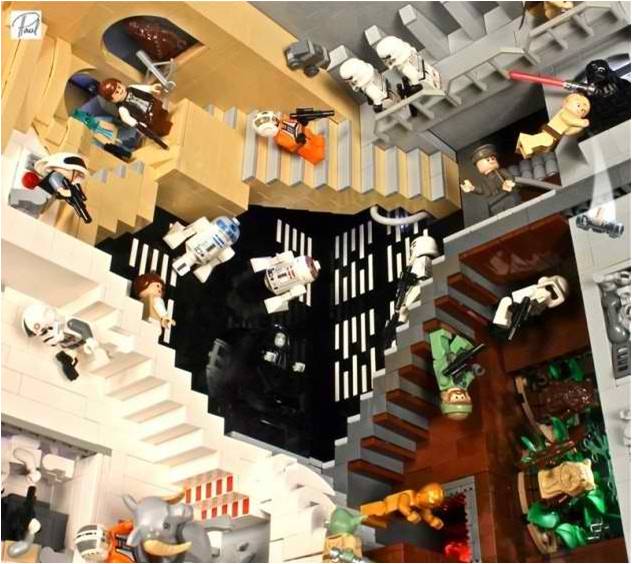
Credit: Paul Vermeesch
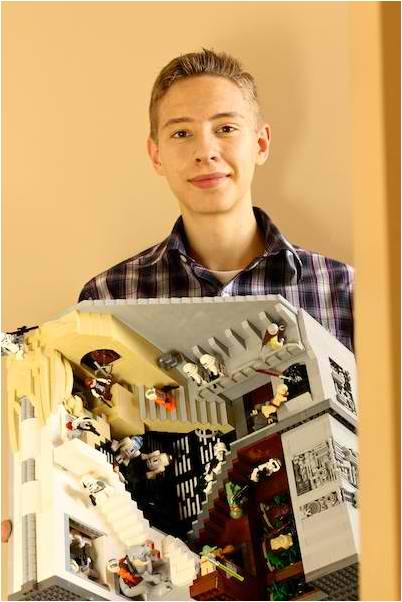
Paul Versmeesch
The rest of us non-Jedi builders can start with a simpler impossible Lego triangle.
—Susana Martinez-Conde
 Neurons are brain cells and they are similar to the other cells of the body in most every way, except that they reach for each other and pass little messages between themselves. It all happens through tiny connections, and the messages themselves are individually simple, but they are traded on such a massively numerous scale, that together they somehow create the very core of your being. These circuits are the Genesis of the syrupy flavor on your waffles. They are the chocolatey goodness of your, well, chocolate. And they motivate you to search for another mouthful.
Neurons are brain cells and they are similar to the other cells of the body in most every way, except that they reach for each other and pass little messages between themselves. It all happens through tiny connections, and the messages themselves are individually simple, but they are traded on such a massively numerous scale, that together they somehow create the very core of your being. These circuits are the Genesis of the syrupy flavor on your waffles. They are the chocolatey goodness of your, well, chocolate. And they motivate you to search for another mouthful.
How this all happens—the ingredients of this mental Chop Suey—are not well understood. But a new tour de force of a study in Nature by Deniz Atasoy and colleagues brings us a little closer to knowing the recipe.
The group based at Janelia Farms in Virginia analyzed the connectivity between neurons within the hypothalamus, specifically within the arcuate nucleus, which are activated in normal behavior by the feeding hormone ghrelin, evoke voracious binge eating when stimulated, and lead to starvation when they are killed. It’s pretty clear that they are critical to regulating feeding behavior. These cells are called AGRP neurons because they express a poorly understood gene called AGouti Related Protein. The brilliant strategy of the researchers was to reverse engineer the connectivity of the AGRP neurons in order to determine the underlying circuits that drive AGRPs to ring the dinner bell.
The surprising answer was that AGRP neurons evoke eating, at least in part, by suppressing oxytocin neurons in the nearby paraventricular hypothalamus. Oxytocin is known as the “love hormone”, and so the result brings a whole new meaning to the term “comfort food” since the results suggest that you can only feel truly touchy feely when your hunger is sated.
–Stephen Macknik

“Deja-Vu x”, By Doris Redrupp: http://smillakatz.blogspot.com/2011/01/deja-vu.html
I hate to break it to all you Keanu Reeves fans out there, but a study from Colorado State University suggests that déjà vu is not what “happens when they change something” in the Matrix. Associate Professor of Psychology Anne Cleary used virtual reality to evoke déjà vu in the lab. The research, published in June in the journal Consciousness and Cognition, showed that déjà vu tended to occur when people viewed a virtual scene with a similar layout to a previously seen scene, but failed to recall the former scene.
Just like in the hotels.com commercial.
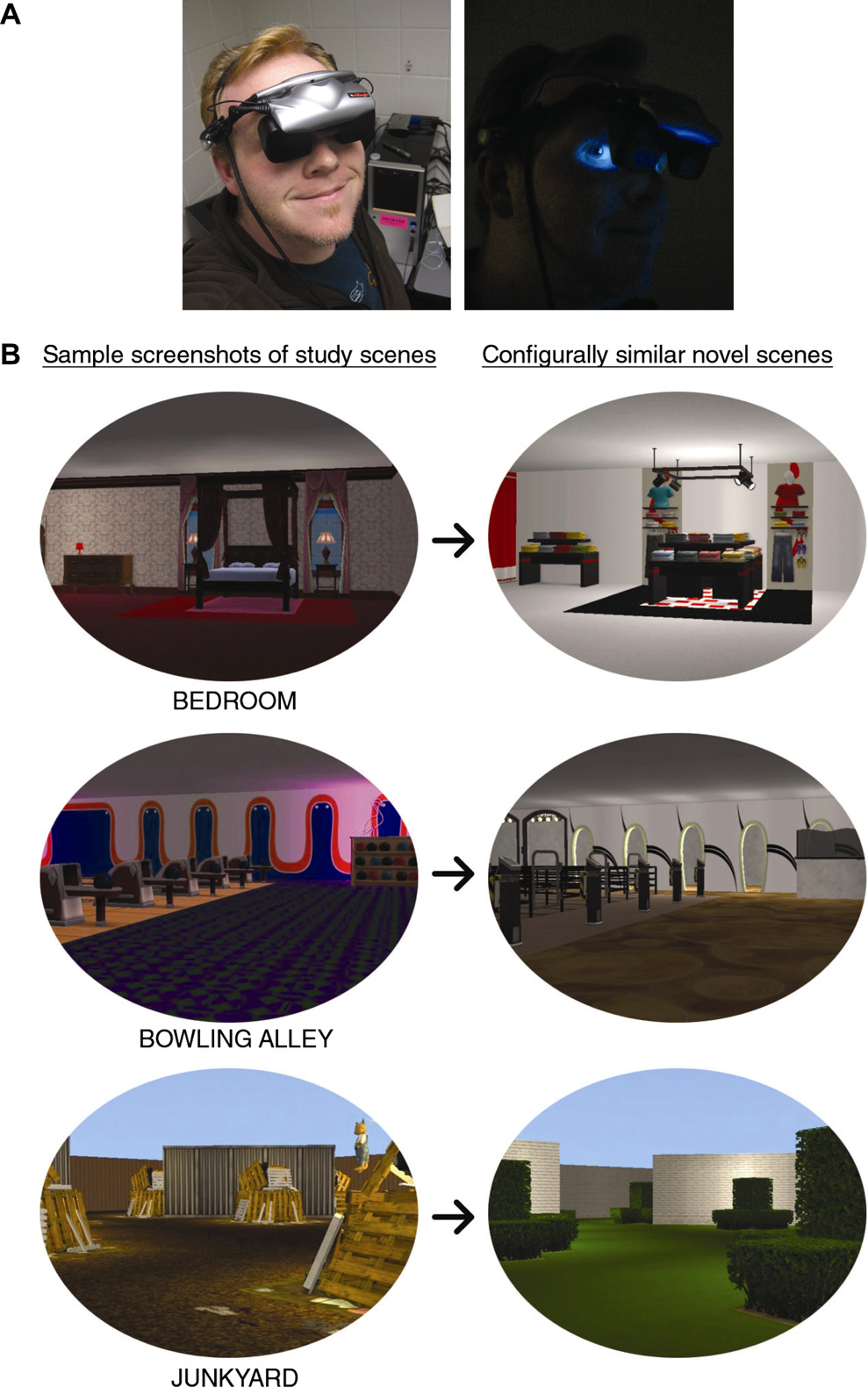
(A) The eMagin z800 3D head-mounted display (HMD); head-tracking enables immersive viewing of each scene through the turning of one’s head to
look around and 3D presentation allows for depth perception. (B) Sample 2D screenshots of configurally similar scenes (study on left; test on right). Though screenshots are 2D, the actual scenes were presented in stereographic 3D; each illustration represents only a portion of the
entire scene, as each could be viewed immersively by turning one’s head or body to look left, right, up or down.
From: http://www.sciencedirect.com/science/article/pii/S1053810012000049
Anne Cleary describes her research in a short video, and Michio Kaku discusses the alternative but unlikely possibility of déjà vu in the multiverse.
Have you experienced déjà vu?
Have you experienced déjà vu?
-Susana Martinez-Conde
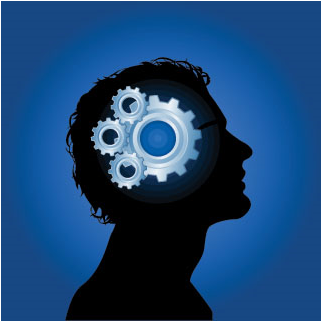
“My message to you is this: pretend that you have free will”. — Ted Chiang, What’s Expected of Us
Ted Chiang is one of my favorite science fiction writers. He doesn’t write very often, but when he does turn in a new, perfectly crafted story, you know you’re in for a real treat.
This week’s pick is Ted Chiang’s take on the age-old problem of free will. Chiang’s story, What’s Expected of Us, appeared in Nature‘s sci-fi series Futures in 2005.
The story explores the consequences that a definite demonstration that free will is an illusion would entail for humankind.
Our book Sleights of Mind also discusses our experience of free will from a nonfiction perspective, as do Jesse Bering and Shaun Nichols‘s excellent Scientific American essays.
Do you think free will is an illusion? Does your belief in free will, or lack thereof, permeate your everyday choices?
-Susana Martinez-Conde
Our friend Ned Block sent us a very timely Monty cartoon (by Jim Meddick) in response to our Monday’s blog post on pareidolia illusions:

by Jim Meddick
Ouija boards have even more to do with the ideomotor effect than with pareidolia, as we discuss in our book Sleights of Mind. But it’s still a funny cartoon!
See what pareidolia is all about on our September/October Scientific American Mind’s Illusions column:
Send us your favorite jokes about neuroscience or illusions, and we’ll post them here.
-Susana Martinez-Conde
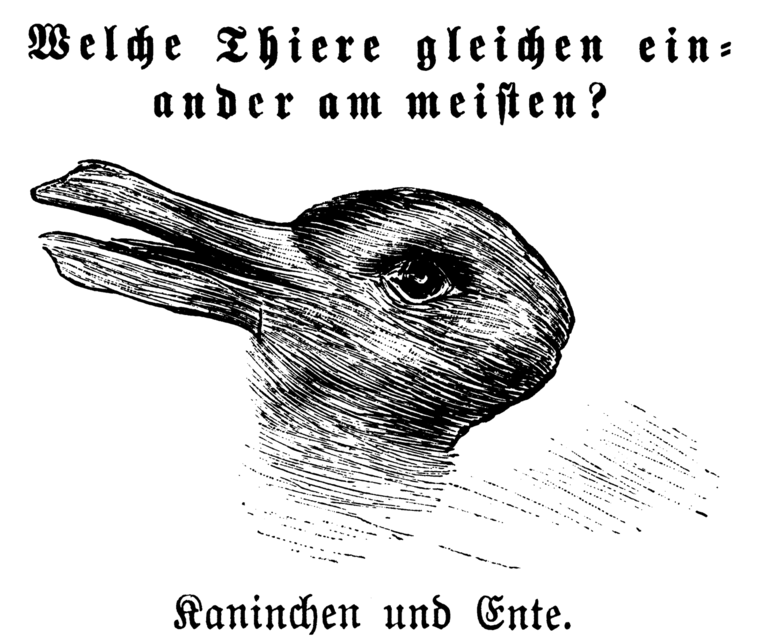
Wednesday is Illusion Day. Every Wednesday, we feature a contemporary illusion, or a variation on a classic illusion.
This week’s pick is an interesting twist on the Rabbit-Duck illusion, presented in the German magazine Fliegende Blätter in 1892.
I haven’t been able to locate the precise source, but here’s how you make a rabbit-duck in real life (death?) with a little help from taxidermy.
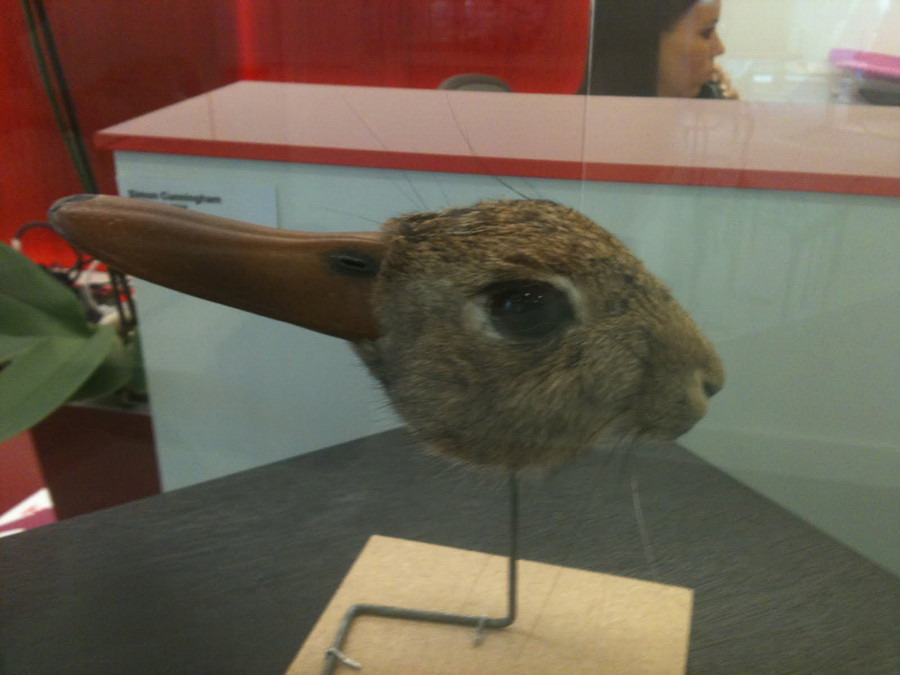
Image from the blog Blame it on the Voices
Do you see a rabbit or a duck?
Also, check the Duck! Rabbit! animation of Amy Krause Rosenthal’s children’s book, and John F. Kihlstrom discussion of the history of the Rabbit-Duck illusion.
-Susana Martinez-Conde



